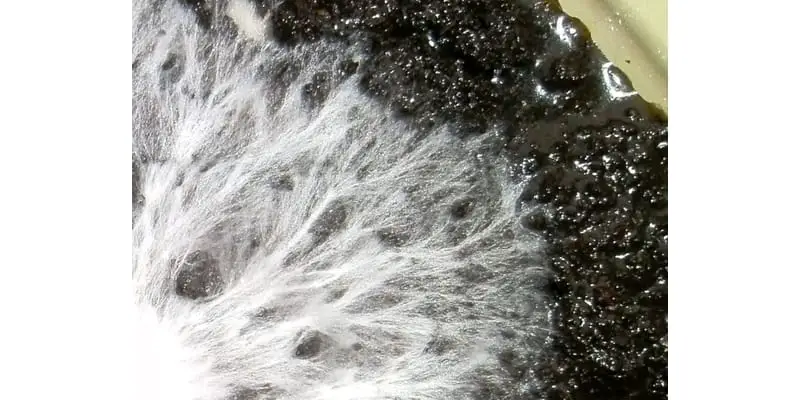Fungi are among the most widespread organisms in the world and play a significant role in the ecosystem. Mycelium is a frequently mentioned term that you have probably come across while reading about fungi. But what is it actually?
Mycelium is the constituent part of fungi, and it is defined as a mass of branched and tubular filaments called hyphae. Mycelium looks like strung out cotton and can be found under rocks, deep in the soil, and forest floors.
The mycelia make up the thallus i.e., the plant body that is not differentiated from the stem and lacks true roots and a vascular system. We could easily compare mycelium to a cobweb-like structure or a network of numerous threads of tiny fibers that are all intertwined and connected.
The mycelium is the vegetative structure of the fungi and is generally found in soils and on other organic matter. Even though most of them are underground, some of the mycelia thrive in rotting tree trunks and other places. Fungi wouldn’t be able to grow, develop, and thrive without mycelium. In fact, the fruiting body of a fungus e.g., mushroom, can sprout from mycelium.
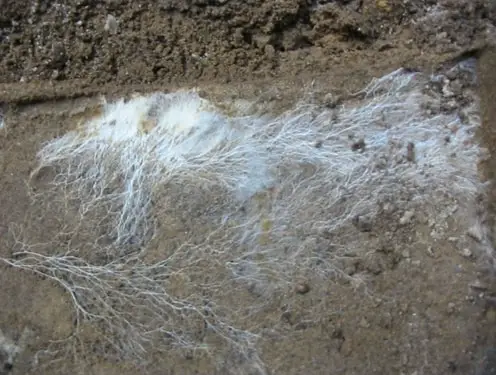
Before we go on, it’s important to mention some differences between hyphae and mycelia, since they are usually considered to be the same thing. Although hyphae branch out to form a mycelium, it is worth noting that mycelia are comprised of hyphal threads that are considered the vegetative part of the fungi, as mentioned above. Moreover, mycelia are like the body of fungi, but hyphae are its building blocks. You can see mycelia with the naked eye but can’t see hyphae without a microscope.
Mycelium Function
Mycelia have tremendous importance for more reasons than one. After all, they are the most important and permanent part of the fungus. For example, they play a significant role in the reproduction of fungi. Fungi do not reproduce through seeds, they need spores to do so. The spores germinate to produce hyphae, and, as seen above, they comprise mycelium.
The germination is, in fact, the beginning of the mycelium from a single cell. In other words, without mycelium, there would be no fungus because, during reproduction (which can be both sexual and asexual), the new fungus is the exact same copy of its parents in the case of asexual reproduction. Therefore, without mycelia, there is no grown-up, adult fungus to reproduce in the first place.
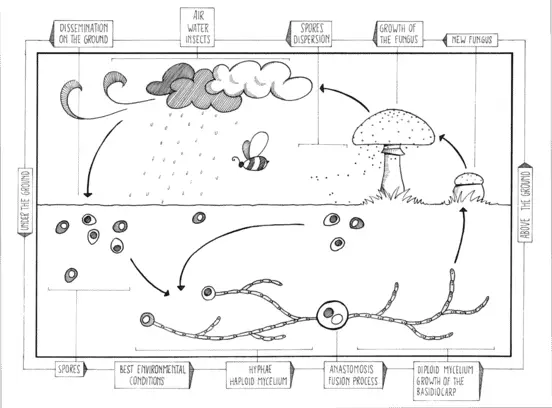
These structures also have a major role in the nutrition process of fungi. Unlike other organisms, fungi cannot produce their own food. Instead, they absorb it from the soil or some other organic matter. To absorb nutrients from the organic matter, fungi need mycelia. A two-stage process is required for the absorption of nutrients.
The first phase involves hyphae that secrete their enzymes into decaying wood or another form of organic matter. The main purpose of these enzymes is to break down biological polymers into monomers i.e., smaller units. Then the second stage occurs, and this is when mycelium absorbs the monomers. Since it participates in the process of decomposition of the organic matter, mycelia are significant for their environment and the ecosystem.
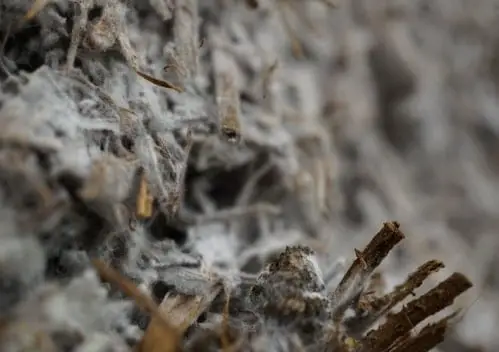
Anatomy of Mycelium
To the naked eye, the mycelium looks just like a cotton ball because the hyphae bundled to form the mycelia. As mentioned earlier, mycelium has a porous structure comprised of tubular filaments called hypha, which is typically 1-30 micrometers (μm) in diameter, depending on the species, and growth environment.
Hypha is one of those tiny threads that make up a mycelium of a fungus, as explained above. These tiny threads perform multiple functions in fungi such as absorption of nutrients from the environment, transporting nutrients to other parts of the fungal body, and they also contain the cytoplasm or cell sap, including the nuclei that carry the genetic material.
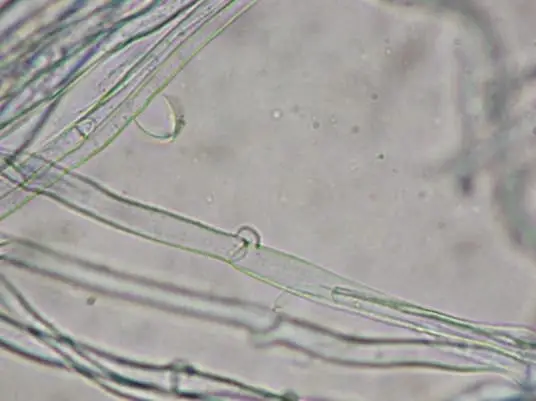
The characteristic components of the hypha wall are chitin, beta-glucans, and proteins. Chitin is a fibrous substance consisting of polysaccharides, while beta-glucans are sugars found in the cell wall of fungi. The outer surface of the hypha wall is abundant in beta-glucans that serve as mucilage while the inner layer contains chitin microfibrils cross-linked with polysaccharides.
Mechanical rigidity and strength of hyphae derive from chitin microfibrils. Evidence shows that mycelium is a biopolymer network wherein the mechanics are determined by the individual filament behavior and the topological arrangement of those filaments in their network.
Although they can be found on the substrate surface or the surface of the soil, the large masses of hyphae reside underground. These masses are called Shiro and play a significant role in obtaining nutrients beneath the soil or from the organic matter to support the growth of the fungus.
Mycelium can spread as far as the substrate of the nutrients is available. This explains why some mycelia can be a few kilometers (km) long. For instance, 1cm3 of soil can contain 1km of hyphae. While the growth of hyphae has a lot to do with external stimuli such as light or chemicals, the development of mycelia expands outwards from the initial source of the nutrients. They grow out circularly and expand further outwards.
Types of Mycelium
Based on hyphae “arrangement,” we can identify two types of mycelium:
Septate – hyphae are divided into cellular compartments by walls called septa. Septa contain small perforations that allow cytoplasm, molecules, and organelles to move between the cells. When injured, fungi can close the septa in order to prevent the loss of fluid.
Many fungi species belong to the septate group, including those in the Aspergillus genus and the classes Ascomycetes and Basidiomycetes. When the latter mate with each other, the septa of one of the parents starts degrading to enable the passage of the incoming nuclei from the other parent through the hyphae. In some fungi species, septa are not just barriers but also supporting structures.
Coenocytic – non-septate fungi, a more primitive form of fungi. In fact, they are ancestors of septate hyphae. Some coenocytic hyphae fungi include those in the genus Mucor and Zygomycetes division. Interestingly, coenocytic fungi do have septa. The difference here is that those septa are only located at the branching points. These types of hyphae occur when the nucleus keeps dividing, but the cytoplasm does not.
Moreover, mycelium can be cottony and is called tomentose, while the finger or root mycelium is called rhizomorphic. In most cases, mycelium begins as cottony and then becomes rhizomorphic. The differences between the two shapes can be age-related, but other factors could also play a role and deserve more thorough research.
History
Mycelium has been a recognized structure of fungi for a long time. Beatrix Potter, an English writer, illustrator, and natural scientist, provided accurate sketches of mycelia over 100 years ago. The famous children’s author was passionate about mycology (the science of fungi), and she even collected mushroom specimens for careful observation under her microscope.

Heinrich Anton De Bary was the first to demonstrate sexuality of fungi in 1858.

The discovery of hyphal fusions, though, is attributed to the brothers Tulsane who depicted them in their work Carpologia (1861-5).
In 1888, Marshall Ward was the first one to actually watch and describe the vegetative fusion in progress under his microscope.
A few years ago, in 2017, the fungus-like forms had been found in rocks dating back to 2.4 billion years. These particular rocks were once beneath the seafloor, suggesting that fungi arose in the deep-sea just as well as they did on the land. The fossils are, basically, threads hundredths of millimeters thick. You guessed it; these threads are mycelia, which could mean that mycelium has been around for millions of years and confirms that fungi are some of the oldest organisms on the planet.
When discussing the history of mycelium, it’s worth mentioning the first benefactor’s lecture about called The Fungal Mycelium: a Historical Perspective, which showed that even at the beginning of the 20th century, in 1914, mycelium was extensively studied.
The lecture also sheds light on Professor A.H. Reginald Buller, the President of the British Mycological Society at the time. Buller’s significance to the mycology world is immense because his sketches contributed to the understanding of mycelia and other fungal structures. Buller also described septate hyphae in great detail, but his work was considered quite controversial at the time.
Mycelium is not just explored for its role in the ecosystem and the environment. Modern ages provide a lot of opportunities to explore other uses of mycelium as well. For example, in 2013, MycoWorks, San Francisco-based startup company, started producing furniture, bricks, and even leather made from mycelium!
Random Facts
Here are some other random facts about mycelium:
- A fungus, with mycelium, found in Blue Mountain, Oregon occupies 10 square kilometers that make it the largest living organism on the planet!
- Mycelia are also important for agricultural production because it depends on the quality of the soil. If there is no interaction with fungi, plants do not grow that well. Thanks to their mycelia, fungi can absorb organic matter and even break down toxic substances. In other words, some fungi can make the soil more fruitful and nutritious.
- A type of honey fungus found in the Michigan forests, which began from a single spore, is estimated to cover over 40 acres, and its mycelia network weighs over 100 tons. The whole organism is about 1,500 years old.
- Mycelium may lie dormant in the organic matter for a long period until conditions are ideal for its further development.
Takeaways
Mycelium is the most important structure of a fungus, but it’s not uncommon for people to think it is the same thing as hypha. In this post, you’ve had the opportunity to learn more about these structures and their significance.
The next time you’re hiking or outside and notice a few mushrooms, just imagine take a second to appreciate the incredible underground network and all of its complexity right below your shoes!
References
- https://www.britannica.com/science/mycelium
- https://thegreentemple.net/articles/mycelium-the-future-is-fungi
- https://fungially.com/what-is-mycelium-natures-world-wide-web/
- https://www.ncbi.nlm.nih.gov/pmc/articles/PMC5638950/#!po=10.0000
- https://www.cabrillo.edu/~ncrane/bio1c/botPDFs/Fungihandout06.pdf
- https://www.sciencedirect.com/science/article/pii/S0007153684802065?via%3Dihub

